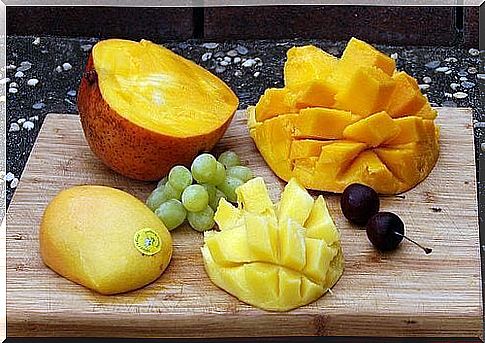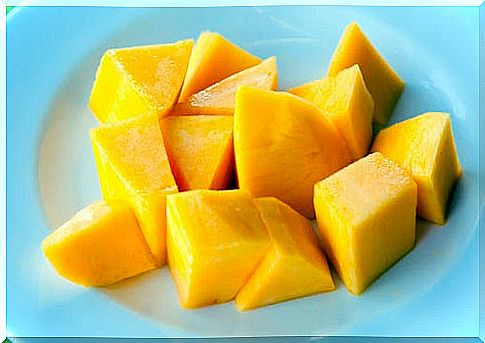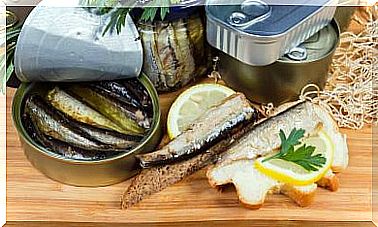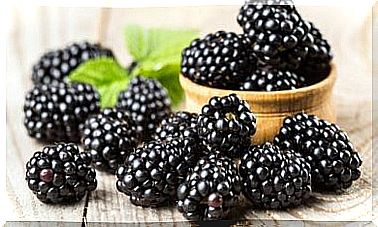15 Interesting Facts About The Mango
The tropical mango is an extremely versatile fruit that has also found its way into the supermarket.

The mango is an exotic fruit that has now found its way into our supermarkets and has also become quite affordable. Here is our fact check:
Interesting facts about the mango
1. Over 1000 varieties!
There are over 1000 different types of mango worldwide ! They differ in the size of the fruit, color and consistency of the pulp, growing area and taste.
Europeans prefer species whose pulp is very poor in fiber, as these fruits are easier to process.
2. Beware of the shell!
The leathery skin of the mango contains allergens and can cause skin irritation. The rash is also known as “mango dermatitis”.
It occurs particularly when the skin has come into contact with large amounts of mango peel or the milky sap of the mango tree.
The fruit should always be washed thoroughly before peeling. This ensures that at least no residues of the milk sap from the tree adhere to the shell.
The pulp is free from allergens and can also be enjoyed by sensitive people.

3. The mango is an oil plant!
Mango kernel oil can be obtained from the oils in the mango kernel . It is very viscous and similar to cocoa butter and is used in chocolate, desserts and margarine.
Mango oil is also used in pharmaceuticals and cosmetics.
4. Mangoes are “vitamin A bombs”
100 g of mango already cover almost 60% of an adult’s vitamin A requirement! That is twice as much as their vitamin C content! Vitamin A is important for the skin and eyesight, among other things.

5. Mango as a source of potassium
It is recommended that adults consume at least 2g of potassium daily through their diet.
Potassium is very important for the body’s electrolyte balance and for regulating important metabolic and nerve impulses. One mango covers about half of the daily potassium requirement.
6. When is it ripe?
Unfortunately, most of the mangoes in our shops are not ripe and therefore have no flavor. A ripe fruit smells fragrant and is soft , but is difficult to transport as a result. Such fruits are rarely available.
Black dots on the shell are also a good indication. The more and bigger, the more ripe the fruit.

7. The problem with peeling
A ripe fruit is not really easy to peel because it always slips out of your fingers. If the fruit can be peeled with the peeler, it is still too hard and unripe .
Ripe mangoes can be easily peeled by pulling the halves over the edge of a glass – the peel remains in your hand and the pulp falls into the glass.
8. Delicious sweet and sour!
Mangos are traditionally consumed as sweet fruit in our country. You can also use them to make chutneys or use them as a fruity side dish or sauce for meat dishes . Experimentation pays off!
9. Perfect for freezing
Mangoes are a good way to freeze fruit that has been bought in advance. To do this, they should be peeled and diced.
This tropical fruit is always in stock to spice up a fruit salad, to refine a smoothie or to enrich a dessert. Mango puree or juice can also be preserved very well in the freezer!
10. Mango also grows in Europe!
Although the mango is originally a tropical fruit, it is also grown in Europe. The largest growing areas are in Spain on the Costa del Sol and on the Canary Islands.
11. Where does my fruit come from?
Most of the mangoes are exported to India, followed by China. The cultivation methods are mostly characterized by extensive application of fungicides, herbicides and pesticides.
Mangoes from non-controlled organic cultivation should therefore always be washed thoroughly!
12. Mango lassie
There are probably as many recipes for the popular, milky, fruity drink as there are types of mangoes.
Basically, the refreshing drink is prepared very easily: Simply add about 600ml of liquid to the fruit puree for each mango.
The mixing ratio of milk product / water should be around 1 to 2, for example 200mg yogurt to 400ml water , but that is a matter of taste.
You can season with salt , cinnamon, ginger , cardamom, rose water and much more – there are no limits!
13. Mango butter for massage
The mango butter melts on the skin at around 35 ° C and is therefore ideal for massage . It is buttery solid at room temperature, which makes dosing easy.
It’s a good idea to keep the mango butter in the refrigerator so it will last longer.
14. Ideal body care!
Mango butter or mango oil is ideal for the care of dry skin and is also used to care for chapped lips and brittle hair.
Carefully dosed, the butter runs between your fingers! Mango butter is available in health food stores and wherever there are ingredients for the production of natural cosmetics.
15. Mango stimulates the appetite
In Asia, children who eat poorly are often given the pulp of a small fruit an hour before they eat to whet their appetite.
The sweetness leads to an increase in the blood sugar level, which is answered with an inslin release.
In the expectation of a larger meal, however, the blood sugar level drops and the child gets hunger and appetite due to low sugar. Pretty smart, the Asian mothers!









